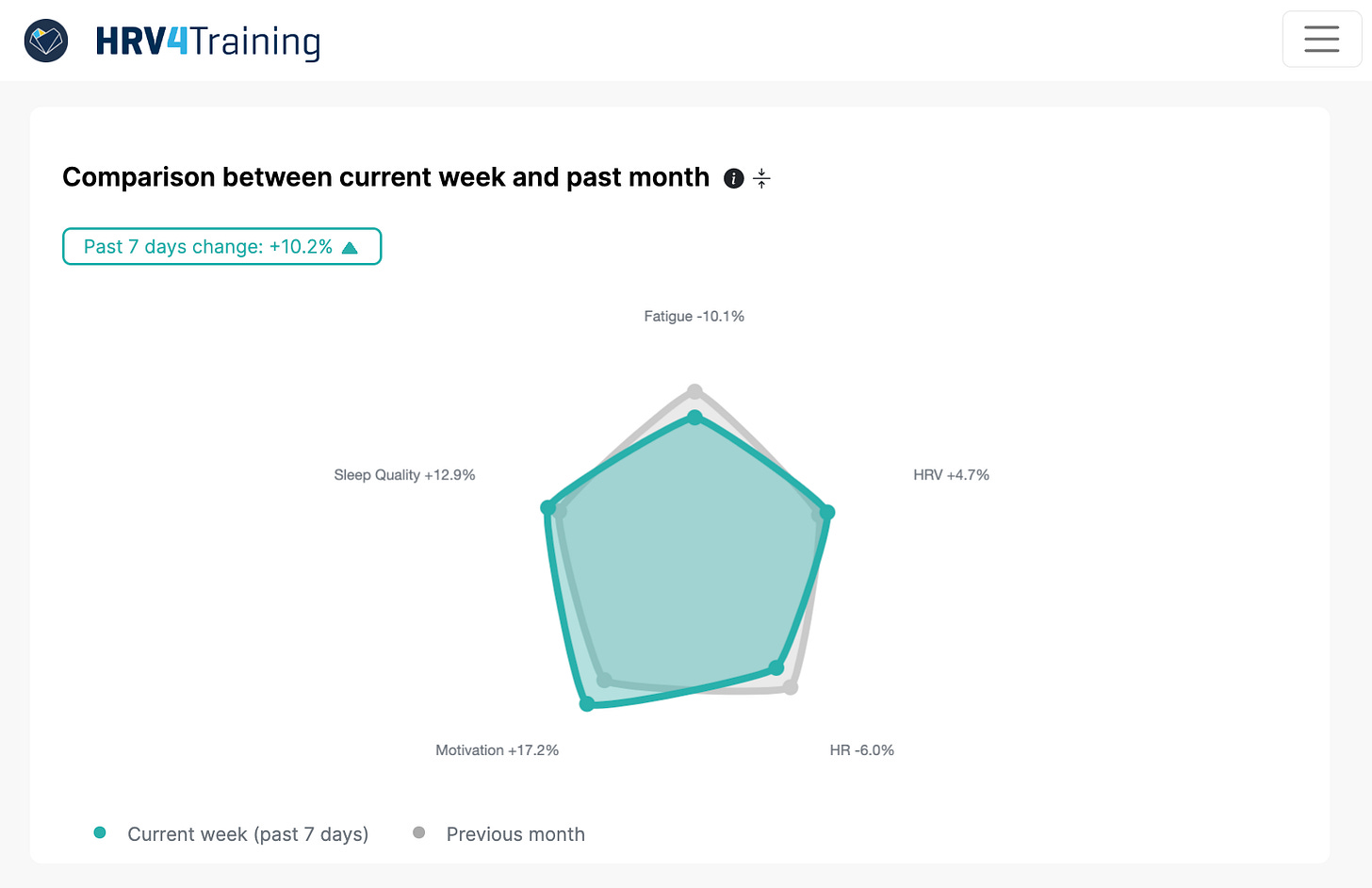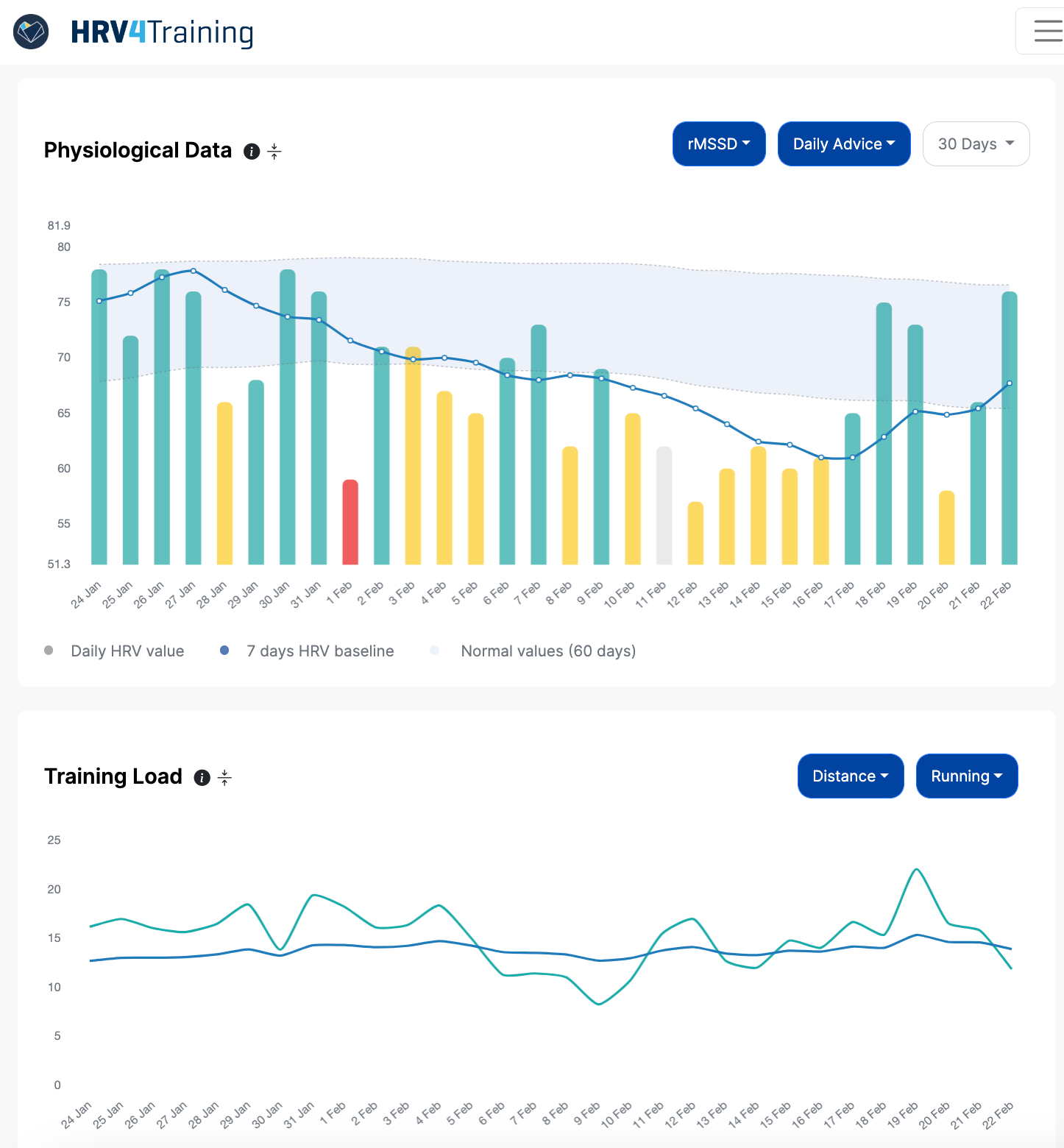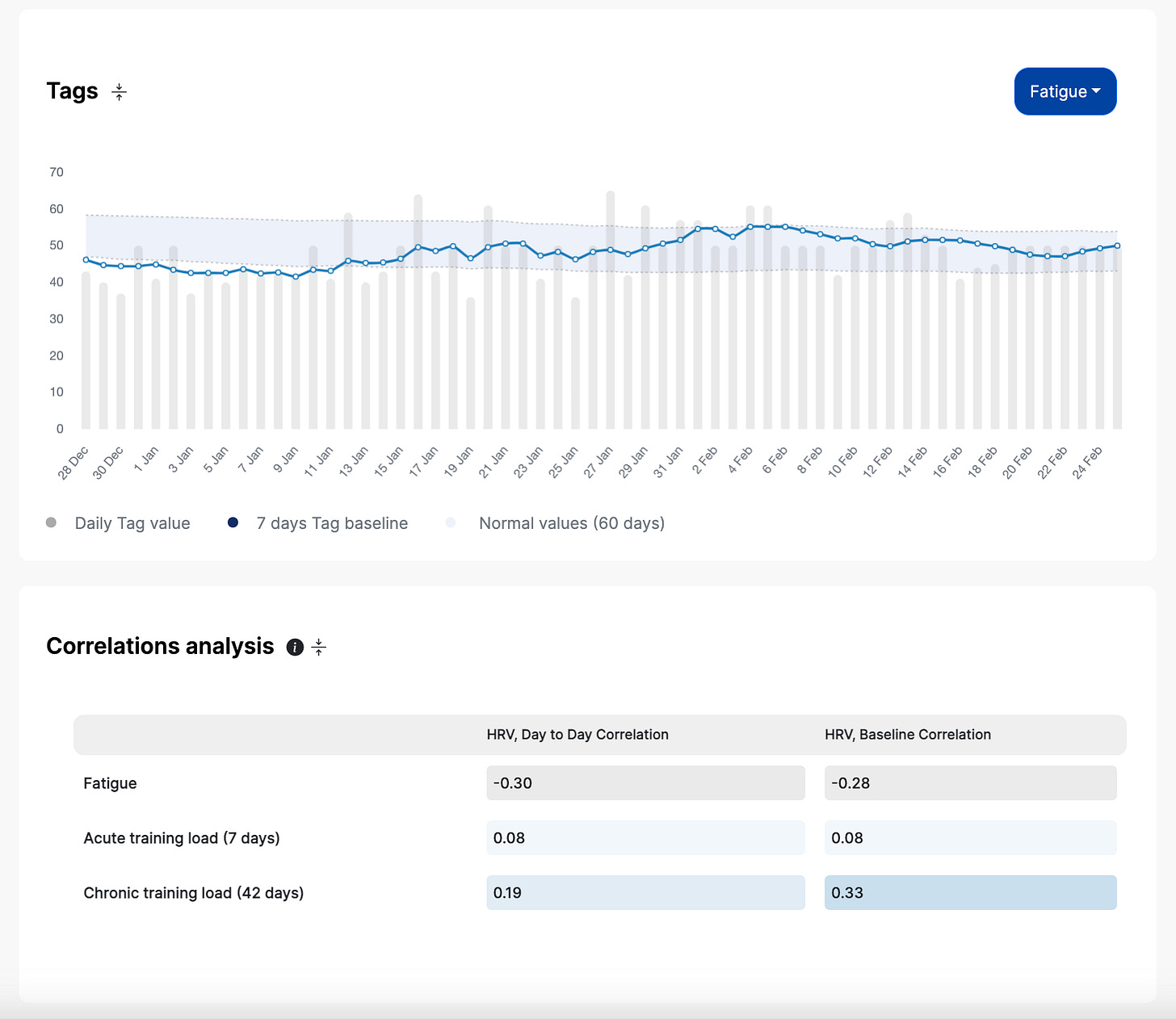HRV4Training Pro: main principles
Launching in mid 2023
In the past few months, I’ve been busy building the new version of HRV4Training Pro, an improved web platform for individuals and teams aiming at better understanding how different stressors affect their resting physiology so that adjustments towards better health and performance can potentially be made.
In this post, I’d like to cover the main approach behind our new platform.
Special thanks to all who supported us so far and that provided feedback along the way. As a small independent business, we can keep going only thanks to you.
A brief history of HRV4Training
Almost 10 years ago we built the easiest and most cost-effective solution to acquire high-quality physiological data, in particular, HR and HRV at rest (HRV4Training’s camera-based measurement). We published a fair amount of work, from the validation of the camera-based measurement to acute day-to-day changes in physiology (heart rate and HRV) in response to training, to methods to estimate VO2max from workout data, methods to estimate running performance and the relation between HRV, training load, and injury. We’ve also partnered with countless universities to facilitate their work. Transparency and solid scientific grounds are what we believe in, which is why we started documenting to the public and validating our work since day zero. Not always the easiest route, but this is what we stand for.
Pro: basic principles
From data can come awareness. However, we need to be able to interpret data correctly, in order to gain insights and make meaningful adjustments. It’s easy to get overwhelmed when things are not put in the right context, and just add to the confusion.
In HRV4Training Pro, analytics and insights are typically built by combining physiological data, subjective annotations, and workout data.
To analyze and interpret the data, we relied on the following principles:
Everything is relative
Big picture first (going beyond day-to-day variability)
Multiparameter is key
Let’s look into them a little more in detail.
Everything is relative
Physiology needs to be always analyzed with respect to an individual’s historical data or normal values. We try not to set any expectations on how the data should look in absolute terms, but provide ways to analyze relative changes over time so that you can better assess individual progress.
For example, in the Dashboard, you can pick up to 6 parameters, including physiological data, and subjective annotations, and compare the recent week with respect to your previous month.
Big picture first
The second most important point is the ability to abstract and go beyond day-to-day variability and acute changes so that we can focus on the big picture.
HRV4Training Pro builds on our previous work on physiological trends to easily highlight how your data is changing with respect to your historical data. In addition, we provide normal ranges for all parameters so that we can 1) avoid naive interpretations (e.g. higher is better for HRV, which is not always the case), 2) easily highlight which changes we should pay attention to (e.g. a suppression below our normal range) and which changes are irrelevant (e.g. the ones within our normal range).
Multiparameter is key
HRV is a marker of physiological stress and it can be extremely valuable per se to track it. However, it is obvious that the ability to collect and analyze multiple physiological (and not only physiological) parameters is key to aiding interpretation and providing additional context around our measurements.
HRV4Training Pro makes it very easy to look at how multiple parameters are changing over time, for example in the Dashboard and Overview pages shown above, or with the resting physiology and correlations analysis. On the Overview page, we will automatically update correlations for the selected parameters, so that you can quickly see how different parameters are related to each other.
I believe there is a lot to learn from being a little more aware of our physiology and how we respond to different life stressors.
My goal with this tool is to help you build a little more on top of the daily measurements so that you can more easily assess when changes are meaningful, what factors are behind them, and potentially make adjustments when needed.
Try it out, here.
Marco holds a PhD cum laude in applied machine learning, a M.Sc. cum laude in computer science engineering, and a M.Sc. cum laude in human movement sciences and high-performance coaching.
He has published more than 50 papers and patents at the intersection between physiology, health, technology, and human performance.
He is co-founder of HRV4Training, advisor at Oura, guest lecturer at VU Amsterdam, and editor for IEEE Pervasive Computing Magazine. He loves running.
Social:






